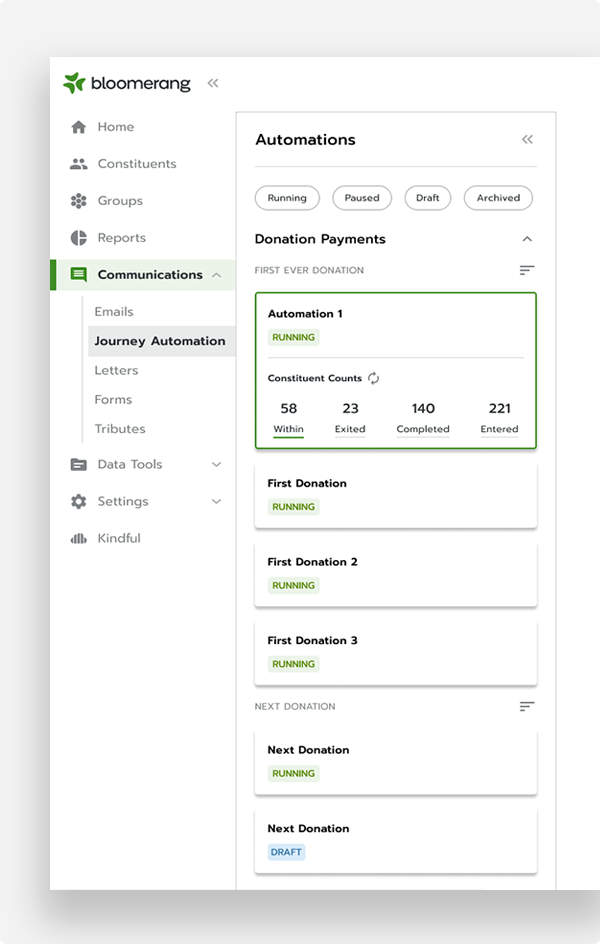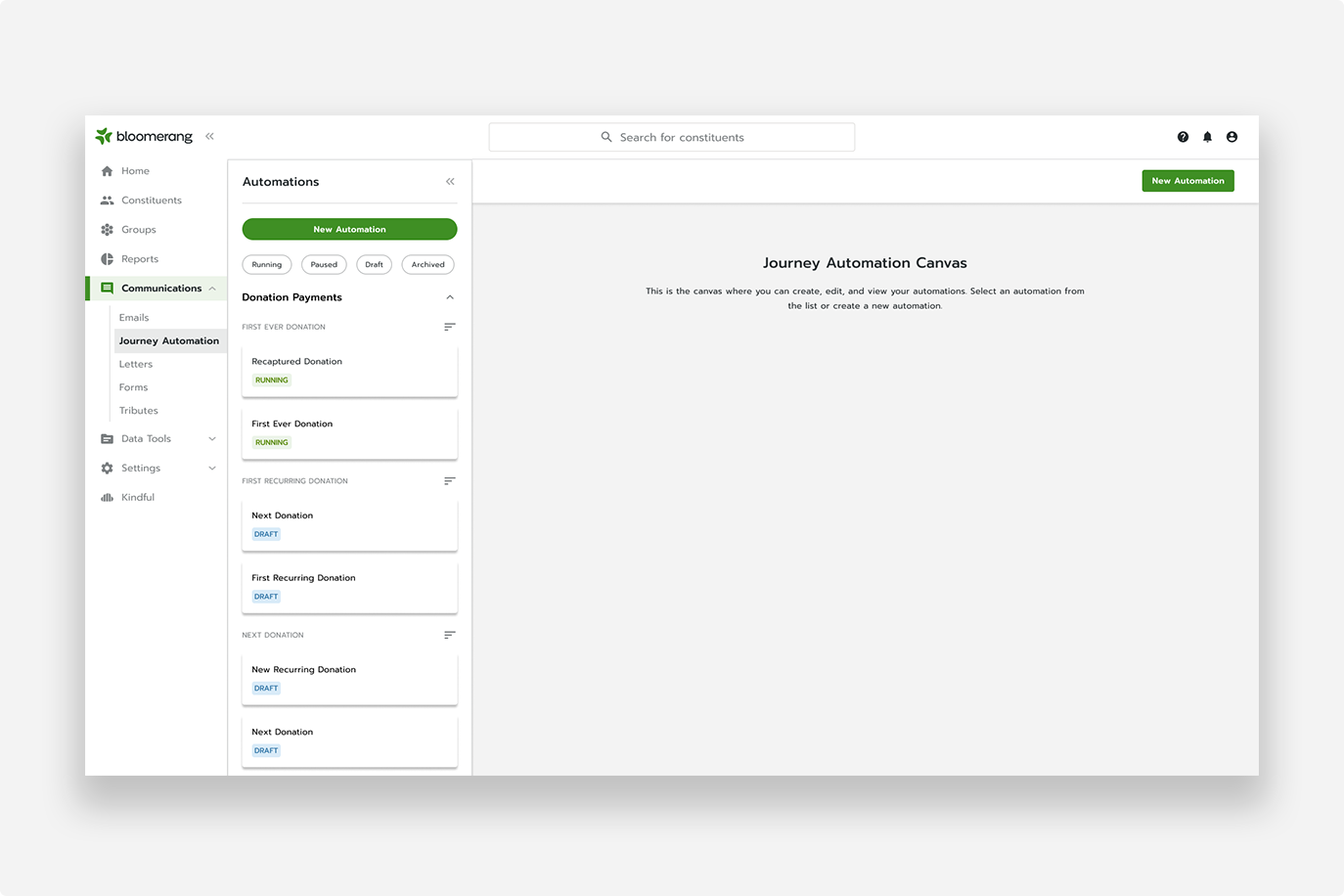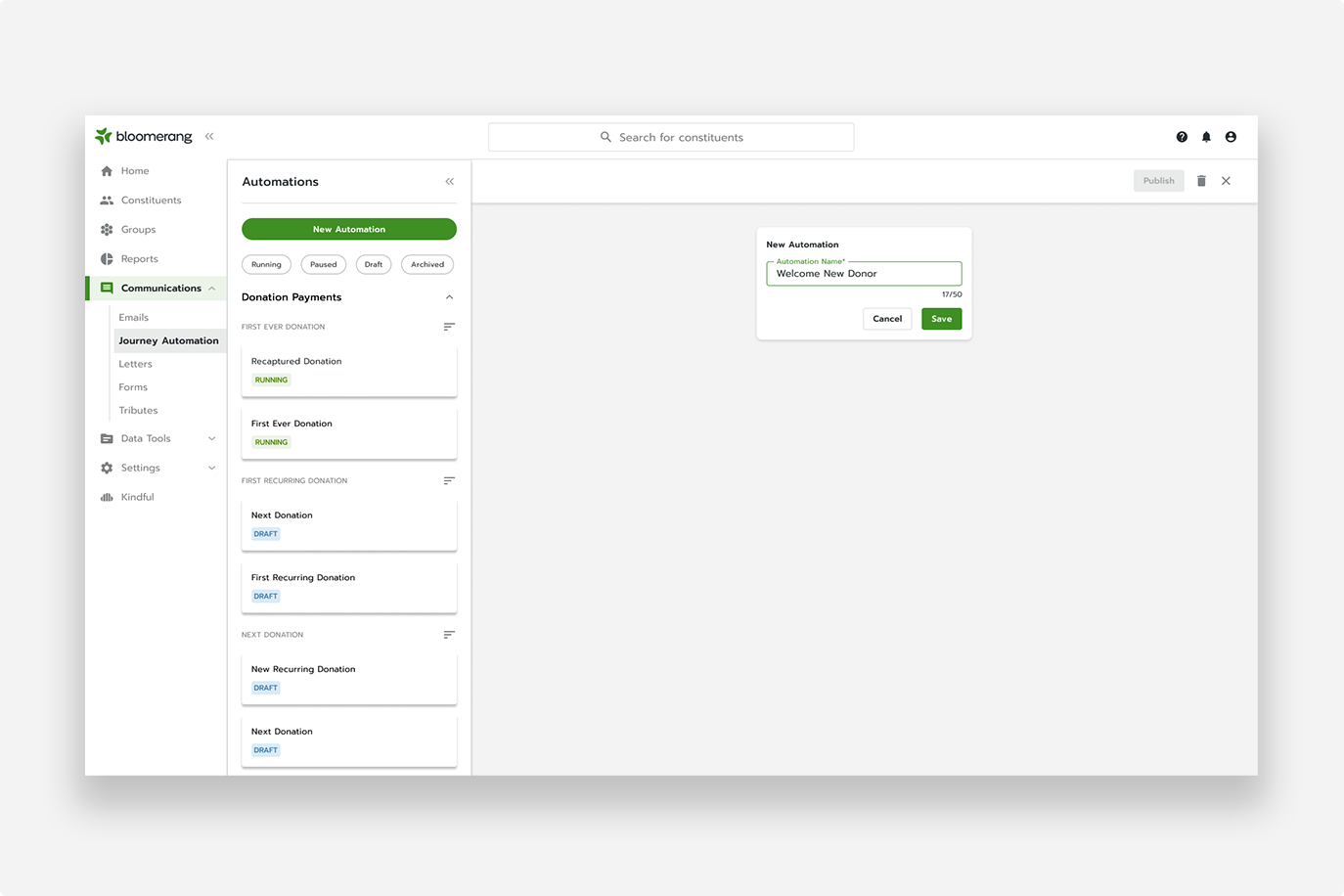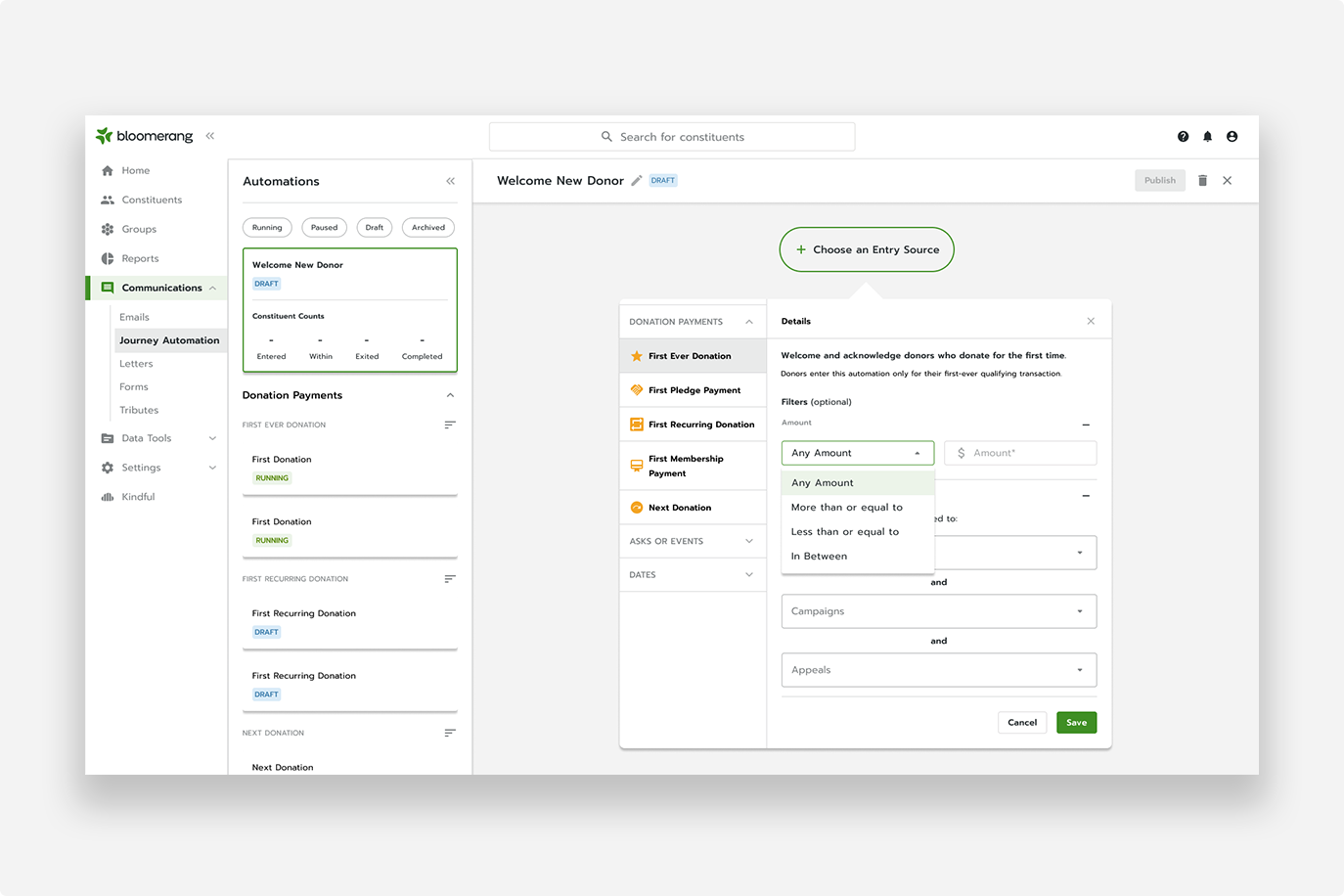Journey Automation
My role: Design Manager
Platform: Bloomerang CRM
Overview
Our customers faced challenges with usability due to a cluttered and unintuitive navigation structure. Users struggled to find key features, leading to confusion and decreased adoption of core functionalities. This case study outlines the process of restructuring the CRM’s information architecture to enhance navigation, improve discoverability, and create a more intuitive user experience.
Problem Statement
Nonprofits and organizations using Bloomerang struggle with timely and personalized engagement with their stakeholders. Manually sending followup emails for donations, birthdays, event attendance, and other interactions is time consuming and prone to inconsistencies. This leads to missed opportunities in donor retention, volunteer engagement, and overall relationship management.
User Goals & Pain Points
User Goals:
Automate email communications based on specific criteria customized by the user without losing personalization.
Increase donor and volunteer engagement through timely outreach.
Save time and reduce manual effort in sending followup messages.
Pain Points:
Manually tracking donor actions and sending emails is inefficient.
Lack of personalization in mass email campaigns results in lower engagement.
Difficulty in ensuring consistent communication with donors and volunteers.
Research & Discovery
To ensure Journey Automation effectively addressed user needs, extensive research was conducted through:
User Interviews
Discussions with nonprofit professionals highlighted common challenges in donor engagement and email automation.
Analysis
Analyzed similar tools like MailChimp and HubSpot to determine gaps and opportunities for a more nonprofit-centric solution.
Data Insights
Reviewed user behavior data within Bloomerang CRM to understand common engagement patterns and automation opportunities.
Key Insights
Personalization Drives Engagement: Users reported significantly higher engagement rates when emails included personalized content such as donor history and relevant milestones.
Automation Reduces Workload: Nonprofits using automation experienced a 40% reduction in manual email efforts, freeing up time for other priorities.
Timeliness Matters: Emails triggered immediately after a donor interaction (e.g., donation confirmation) led to a 25% increase in donor retention.
Customizable Journeys Are Essential: Users expressed a need for flexibility in designing automation workflows to match their unique engagement strategies.
Data-Driven Optimization: Organizations that analyzed performance metrics were able to refine their campaigns and improve engagement over time.
Design Process
We followed a user-centric approach, ensuring the solution addressed real world challenges faced by nonprofits. It began with synthesizing insights from user research and discovery, translating them into clear design goals.
We started with low-fidelity wireframes to explore different automation flow structures, focusing on intuitive navigation and ease of use. Through iterative design and feedback loops, we refined these concepts based on user testing and stakeholder input. Continued prototypes helped validate key features like trigger-based automation and customizable journey paths.
Collaboration between design, product, and engineering teams was crucial in aligning the vision with technical feasibility. Usability testing sessions ensured the interface was accessible, efficient, and met user expectations. This iterative and collaborative approach resulted in a well-rounded solution tailored to the needs of nonprofit organizations, balancing automation with personalization.
Solution
Trigger-Based Automation: Emails are sent based on predefined triggers such as donations, event attendance, birthdays, or volunteer sign-ups.
Personalized Messaging: Users can customize emails with donor names, donation history, and other relevant details.
Customizable Journey Paths: Nonprofits can create automated sequences to nurture relationships over time.
Performance Tracking: Insights into email open rates, engagement metrics, and journey effectiveness.
Impact & Benefits
Improved Engagement: Automated emails reach donors and volunteers at the right moment, increasing response rates.
Time Savings: Eliminates the need for manual follow-ups and tedious maintenance with large segments of donors.
Consistency & Accuracy: Ensures timely and targeted communication, strengthening relationships with constituents.
Conclusion
Journey Automation in Bloomerang bridges the gap between efficiency and personalization for nonprofit organizations. By leveraging automation, users can maintain strong relationships with donors and volunteers while reducing manual workload, ultimately enhancing their overall fundraising and engagement efforts.







